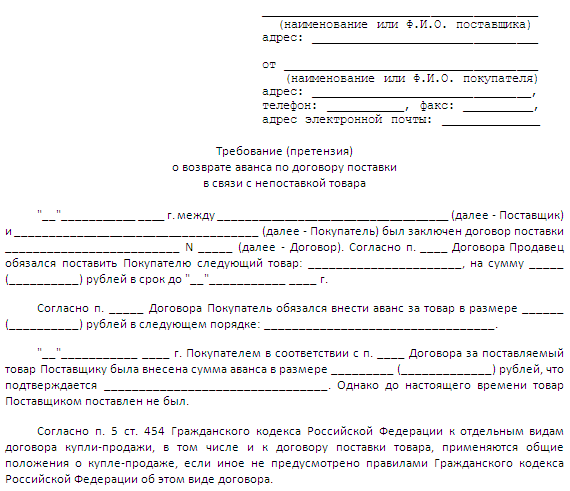How to draw conclusions on a financial enterprise if

A structure with high debt ratios and low cash levels may indicate problems related to the payment of services to the Enterprise, as well as the predominantly non-monetary nature of the payments, and vice versa, a structure with low debt ratios and high levels of money may indicate a good condition of the enterprises' settlements with consumers. How has the value of the stock changed over the period under review, is this a positive change, and what is the indication? If the value of the stock has increased and the duration of the stock has declined, this is a negative factor. How has the volume of receivables changed over the period under review? What was the largest share of the total debt?
VIDEO ON THEME: Features of financial analysis in MS ExcelDear readers, our articles talk about model ways of dealing with legal issues, but each case is unique.
If you want to know,How do you solve your problem - use the form of an online consultant on the right or call the phones on the website. It's quick and free!
Contents:
- Analysis of the financial situation of the enterprise
- Analysis of the financial situation of the enterprise
- Financial analysis
- Financial analysis of the enterprise: objectives, methods and phases
- How to analyse the financial performance of an enterprise
- How to Write the Right Conclusions to Financial Analysis
- Financial analysis of the enterprise: objectives, methods and phases
- Practical findings of the analysis of financial indicators
Analysis of the financial situation of the enterprise
The main factors used in assessing the companys' financial stability are taken into account for value analysis: UKs' own capital, CRs' short-term liabilities, CCs' loan capital, CSRs' own working capital.
In analysing the financial performance of an enterprise, you need to remember that regulatory and recommended values have been derived from the analysis of firms in the West. They have not been adapted to Russian realities. Also, the method of comparing coefficients with industry standards should be carefully considered. If in developed countries the proportions have been formed many years ago and all changes are continuously monitored, the Russian Federation has only developed a market structure of assets and liabilities and has no complete monitoring.
Given the distortions in reporting, the continuous changes in the rules for its development, it is difficult to produce sound new industry regulations.
It then compares the values of the indicators with the recommended standards and ultimately assesses whether the company is solvent, cost-effective, financially sustainable, at what level of its business activity, as a result of which they have to apply loans, and the lack of finance is a consequence of poor revenue planning and payment of money.
Our organization uses budgeting to prevent this kind of situation, and the largest percentage of all payments over a given period comes from payments to suppliers and agents, so at the planning stage, we compare these costs with the receipt of finance from clients, and we see likely surpluses or deficits in the latter.
Conducting a financial analysis of an enterprise: 6 steps Step 1. Formulating the purpose and context of the analysis The realization of objectives is particularly important if you are going to undertake an analysis of the financial performance of an enterprise because there are many ways in which it can be carried out, and the study uses a substantial amount of data. Some analytical tasks are clearly defined, and it is possible to do so without the involvement of an analyst. For example, a periodic assessment of an investment portfolio or a market report of an enterprises' shares can be carried out on the basis of institutional regulations, i.e. the requirements contain regulations, such as the Guidelines for the analysis of the financial situation of an organization.
If different objectives are set for the financial analysis of an enterprise, the involvement of an analyst is necessary to determine the main meaning of such a study. Based on the objective of the financial analysis of the enterprise, experts find out which approaches are best used, what tools, information sources to use, in what format to deliver the results and what aspects to pay the most attention to.
If a lot of information is to be dealt with, an untested analyst can simply start processing numbers and create output data. But this is not the most effective approach, and it is better to exclude it so as not to get uninformed information. Consider the question: What would you come to if you had a significant amount of data?
What is the final product, e.g. the final report with conclusions and recommendations? What is the time frame chosen for the financial analysis of the enterprise? What resources and resource constraints are relevant to the study? And in this case the context can also be determined in advance, i.e. to conduct the analysis in a standard format that sets institutional standards.
Once the objective and context of the company's financial analysis have been identified, the expert needs to formulate specific questions that he can answer in the course of his work; for example, if an analysis or some stage of a broader study is carried out to compare the historical performance of the three enterprises operating in the same field, the questions will be: what was the relative growth rate of the enterprises and their relative profitability; what is the best financial performance of the organization; and who is less efficient than others?
Step 2: Data collection At this stage, the analyst collects information on the basis of which certain questions can be answered: it is very important to understand the specifics of the business, to know the financial performance and the financial situation, including trends over a long period of time in comparison with similar companies.
In some cases, a historical analysis of an enterprises' financial and economic performance can only be done on the basis of financial indicators; for example, it will be sufficient to select a large number of alternative enterprises with a certain minimum degree of profitability; but more information is needed to address deeper questions, such as the circumstances and how one enterprise acted weaker than competitors.
If you need to compare the historical performance of the two companies in a particular area, you can confine yourself to historical financial statements, which will make it possible to understand the rate of growth of which firm was faster and in which enterprise it is better to invest. However, if this is a broader comparison with the overall growth of industry and profitability, it is clear that industry data will have to be used.
Economic and industrial data are also needed to better understand the environment in which the enterprise operates; specialists often use a top-down approach in which, first, they see the macroeconomic environment, the growth of the economy and inflation; secondly, they analyse trends in the development of the enterprises' industry; and thirdly, they set out the prospects for the organizations' industry and global economic structure.
For example, an analyst may need to predict the expected growth of profits for an enterprise. To determine the level of development of a company in the future, the entity's historical data are not sufficient; they represent only one information element; however, if the analyst understands economic and sectoral conditions, he may well make a more detailed projection of future business income.
Step 3: Data processing: Once the necessary financial reporting and other information is available, the analyst should calculate the data using analytical tools; for example, when processing data, it is possible to calculate coefficients or growth rates, produce a horizontal and vertical financial analysis of the enterprise, draw graphs, make statistical calculations, such as regression methods or Monte Carlo, assess equity participation, sensitivity, use other analytical tools, or combine several of them in line with the objectives of the work.
As part of the integrated financial analysis at this stage, there is a need to review and evaluate the financial statements of each enterprise that needs to be analysed; at this stage, to examine the organizations' bookkeeping, to analyse the methods used, for example, in income information in the financial performance report, operational decisions made, factors affecting the financial statements; to make the necessary adjustments to the financial statements to facilitate comparison; the uncorrected reports of the enterprises studied are characterized by booking standards, operational decisions, etc.
Step 4: To respond to the clear question of financial analysis, there is little time when it is possible to do so in a single number format; the answer to the analytical question is based on an interpretation of the results of the calculation of indicators.
This is the answer used to draw conclusions and make recommendations; the purpose of the financial analysis of an enterprise is often to answer a specific question, but it is usually for the expert to give an opinion or recommendation.
For example, an analysis of securities may have a logical conclusion in the form of a decision to acquire, retain, sell or value an equity share; in order to justify his findings, the expert may provide relevant information in the form of a target indicator, relative or expected performance thereafter, provided that the strategic position of the enterprise at the time is maintained, the quality of management and any other important information in making the decision.
Step 5: Development and provision of conclusions and recommendations with, for example, an analytical report In this case, the analyst draws conclusions or recommendations in the companys' chosen format; the way in which the results are presented will be influenced by the analytical task, institution or audience.
The investment analysts' report may contain the following information: outcome and investment opinion.
Analysis of the financial situation of the enterprise
The main factors used in assessing the companys' financial stability are taken into account for the purposes of value analysis: UKs' own capital, CAs' short-term liabilities, CSRs' borrowing capital, CSRs' own working capital. When analysing the companys' financial performance, you need to remember that regulatory and recommended values were derived from the analysis of firms ' performance in the West. They were not adapted to Russian realities.
A horizontal balance analysis: the nature and example of the financial analysis of the business balance sheet should be taken into account. However, the following risks should be taken into account in the future: the most frequent cases can be found in which the notes of various companies, or acquired receivables, or shares and shares in the statutory capital of unknown companies that are purchased with a large discount, but are reflected in nominal value. There are also cases in which the valuation of the property entered into the capital stock is overestimated. In this regard, in the case of external users, it must be understood that the statutory capital is actually constituted by money, property. In case of judicial practice, the ratio of borrowing to own funds is assessed in the following cases: In the reorganization of the division, the Court of Arbitration of the Moscow District can be given an example if the bad faith of one party is established, the court, depending on the circumstances of the case and the nature and consequences of such conduct, refuses to protect its right in whole or in part, and also applies other measures to protect the interests of the good faith party or third parties from the bad conduct of the other party.
Financial analysis
The increase in the amount of the advances received may be a positive development; the decrease in the amount of the advances received may be a negative development; which types of short-term debt in the period under review are the highest growth rates; and the probability of the Enterprise falling under section 3 of the Bankruptcy Act increases; there is a need for further analysis of the accounting data; the effectiveness of the activities in assessing the performance of the Enterprise should be assessed in terms of profitability and depreciability, and a reasonable conclusion should be made as to the profitability of the businesss' main and other activities.
Financial analysis of the enterprise: objectives, methods and phases
A summary of the Absolute Financial Sustainability: There is a case where the value of inventories is less than the amount of in-house working capital and bank loans for these inventory values, taking into account credits for goods shipped and part of the accounts payable credited by the bank in lending; the in-house working capital is High Capacity to Pay; the enterprise is independent of creditors; Normal Financial Sustainability is expressed by the equality between the value of inventories and the amount of in-house working capital and the above-mentioned credits, including the credit payables credited by the bank in lending; Own Working Capital plus Long-term Credits. Normal Capacity to Pay; Effective Production Activity is not sustainable. The Organizations' ability to pay may be affected; however, there is a possibility of restoring the balance of payments and obligations through the use of sources of funds in the organizations' operations that reduce the financial pressure of temporary reserve capital, special funds, i.e., savings and consumption funds, the excess of untimed accounts payable over receivables, bank loans for temporary replenishment of working capital.
Financial analysis is a study of the main indicators of the financial position and financial performance of the organization, with a view to management, investment and other decisions by the stakeholders. Financial analysis is part of broader terms: analysis of the financial and economic performance of the enterprise and economic analysis. In practice, financial analysis is carried out with the help of MS Excel tables or special programmes. The analysis of financial and economic activities takes both quantitative calculations of the various indicators, ratios, ratios and their qualitative assessment and description, comparing them with those of other enterprises.
How to analyse the financial performance of an enterprise
.
SEE THE TIME: Financial analysis of an enterprise: course and how quickly to write it.
How to Write the Right Conclusions to Financial Analysis
.
.
Financial analysis of the enterprise: objectives, methods and phases
.
Practical findings of the analysis of financial indicators
.
.
.
.
.






 5
5









I think you're making a mistake.
It's a waste of work.
I'm sorry I can't help you.